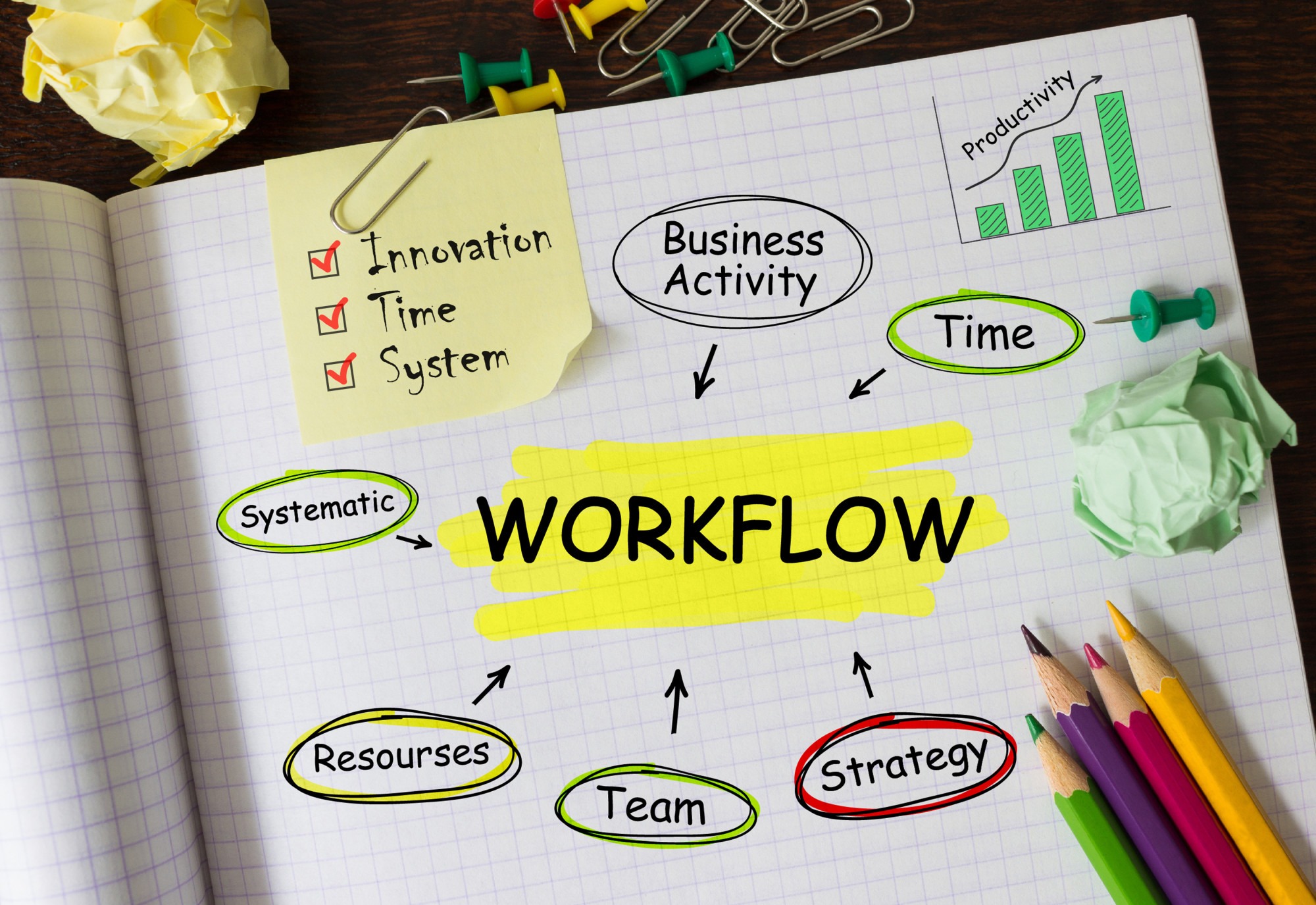
Share The Love:
Table of Contents
Do you know the term “growing pains?” If you have ever grown a business or developed a start-up, you know what it means in business to endure a “growing pain.”
You want your business to thrive, and that’s the goal. Taking on more and more means changes, and if you are not ready for the changes, they can hurt.
That’s why streamlining project workflow is essential because when you are organized and ready for it, it takes away the pain (or at least some of it). There are fewer hurdles to cross over.
Wellingtone reported in 2020 that just under a quarter of organizations use project management software. CIO stated that organizations who leverage proven project management practices waste less money by 28 times over their counterparts who do not practice project management.
If you are looking to grow your business with more efficiency and less potential for challenges, project workflow and automation can assist you. For a better understanding, let’s get into the details of how it works best.
The Purpose of Workflow
Workflow management has a purpose, and that is to streamline. It takes the pieces of multiple office systems and removes the tasks that are unnecessary. By doing so, you are eliminating the associated cost, too, of such unnecessary tasks.
With the steps that remain, you want to automate as much as you can. In enterprise business, every department has something to benefit from workflow automation. This means reducing errors, increasing efficiency, boosting productivity, and speeding up processes.
If you are scratching your head, you don’t need to. We are going to help you. Let’s discuss how to get started step by step together.
Analyze Your Current Workflow
It may sound strange, but it’s true. An unfortunate fact is that many companies do not understand the process of how their business operates.
A famous quote from an an author unknown once said, “Invest a few moments in thinking. It will pay good interest.”
The first step toward streamlining your project workflow is creating a list of all your business processes. Next, you will need to analyze them thoroughly. You must understand how every part of your company operates.
The goal is to discover how it is you currently operate and then find what your business can improve upon. It is best to get insight from your employees, the ones who perform the tasks every day. Document every detail so that you understand all the steps in the processes that are involved.
Identify Where the Business Can Improve Processes
After you complete your analysis of the current process as it stands, you want to identify the places to make improvements. Find what it is that is affecting your efficiency in the project workflow. You can look for things like:
- Communication breakdown
- Unclear instruction
- Waning motivation
This is where you can fill in gaps and get creative. Use the information on current processes that you have gathered to create a better work process. Eliminate any of the loopholes that you discover.
Process Breakdown
Next, you want to take the process and break it into smaller, digestible steps. Your goal here is to simplify things.
Today, many companies can get snagged on a process that is much too complicated, unfortunately. You want to make your project workflow simple to get the results your business desires.
Prioritization
After you break down the processes, you want to rank them in order of importance. Which are the most critical? You can mark them on a scale of one to ten, with one being the most critical.
Not only are you looking for a workflow that is maintained correctly, but you are also seeking the best possible outcome toward the end of the process.
Documentation
It’s impossible to remember every part of the process. That’s why you need all the steps written out. That’s how you can drive efficiency.
It does not have to be a formal version. You can scribble it all on a sheet of notebook paper. The aim is to take away assumptions and get a snapshot of what is really going on.
Workflow Automation
The research has been done. The loopholes are gone. You have now prioritized and documented everything.
Congratulations! It is time to automate. This is where the real fun begins.
Tasks and project workflow can get derailed from errors in data and miscommunication. This is when you need to implement project workflow software. It simplifies a once complex business process.
Test the New Project Workflow
You will want proof that you have now boosted efficiency. This means that you need to test your new workflow. Put your research into practice and let it work for you.
Again, do not assume you have all the right answers. Do a test run. If you have a new project coming up, this is a great time to apply your new workflow and see how the entire process works.
When your business uses a project workflow software, there is typically report automation that is offered with it so that you can measure how efficient your teams are and look at KPIs or Key Performance Indicators.
Get Ready for Adjustments
Upon completion of testing the new project workflow in real life, you can identify areas of improvement. Now, you want to practice patience here. New things like this take time, but it is well worth the reward, so stay on course.
Evaluate each process. You want every part to work superbly. You may need to adjust something, and if so, do it according to what you find needs improvement to attain the best result.
Implementation
Now that you have tested it and made improvements where needed, it is time to implement your new workflow. Kudos!
You will need to meet with employees and managers to explain the new workflow. It may help boost the stakeholders’ support if you can go into further detail about your findings along the way. Tell them how you arrived at the process that you did.
When there is a thorough explanation beyond just implementing a new process, it will better engage the teams who are involved. You want all employees to get the most out of your new workflow. Make sure that everyone understands not just what, but why you are doing this.
Be sure to take questions and answer them as best you can. You may find that they will give you new insight that was not brought to your attention before when you first analyzed current processes.
Fine Tune as You Go
Even with all the work you have done, it is likely that your workflow will not be perfect. It is okay. A workflow is a fluid process that can always be refined.
Kim Collins once said, “Strive for continuous improvement, instead of perfection.”
Once you have made improvements to the project workflow, you can fine-tune it as time goes on. Again, there is project workflow software available that can help you with this part of the process.
Benefits of Project Workflow Management
Even if you know that your project workflow has well-established, thoroughly conceived processes, you still have a question to ask yourself: “Is it giving my business the desired results I was hoping for?”
That is why workflow management is so important in the long term. It gives the continuous insight that you need to get more profits.
For instance, you may encounter redundancies you did not know were there. Redundant tasks equal wasteful spending. Once you can identify it, you can have your employees change their focus to something more important and more beneficial for the company.
When you take away things that do not serve a purpose, you are giving your company the opportunity to perform better.
Reduce Micromanagement
One of your goals during this process should be to increase accountability among your staff. Micromanagement causes a lot of issues for company culture, as it irritates employees. In fact, reports show that micromanagement is a big reason that people will quit a job.
As much as people hate to be micromanaged, sometimes you will find you need to if it does not motivate an employee to accomplish tasks on their own.
When you have a clear map of a project workflow, each participant knows the tasks and expectations for them individually. They know who is completing which task and by what deadline.
This leads to accountability. It also means that managers should be able to stop spending time micromanaging an employee. Everyone can see the process, what is happening, and what needs to be done to achieve the result.
Project workflows help to improve employee and management relations, as well as increase job satisfaction.
Improve Time Management
If you can keep a project on track with a good workflow, this gives your teams the opportunity to make an accurate prediction of the timeline. That’s because each step of the workflow also manages the time that the task should take. When you document timelines, employees and managers are better prepared to manage their time as needed.
Better Communication
No one enjoys playing a game of “he said, she said.” The facts get distorted. When communication is poor, it leads to many challenges.
The Harvard Business Review reports that communication is critical in the workplace because it directly affects everything about the company. Poor communication can lead to poor company performance.
Unfortunately, you can share the same goals but disagree on how to achieve them. Again, project workflow can help!
Seeing the processes and giving accountability will improve communication in the workplace. It will take away any room for ambiguities or disagreements.
Operations can run smoother. Not only that, but you can also reduce employee dissatisfaction and turnover, which is great news.
Better Customer Service
You want your customers to be happy. Without them, you will no longer have a business.
An outdated manual system can hurt the customer experience, especially in terms of customer inquiries and complaints. Maybe routing an inquiry to the right person, or a department, takes too long internally.
According to a report from KPMG in 2020, 90% of consumers globally said they think their most important concern with customer service is issue resolution.
If you cannot quickly get back to a customer with a suitable answer, the customer will walk away and not come back. When you boost efficiency with a seamless project workflow, you can address customer inquiries and complaints quickly.
Higher Quality Products and Solutions
One issue companies can face when they don’t streamline their project workflow is that they will choose an employee for a project based on availability. Instead, choose someone who has the right skill set.
A workflow helps to think about what you truly need so that you can specify who is best suited for the task. It is better to assign tasks to the expert. The result of doing this can include an increase in productivity for the organization and a boost in employee morale.
Eliminate Human Error
An enormous challenge for manual tasks is the potential for human error. Streamlining and automating workflows and processes dramatically reduces the chances of errors and omissions.
In time, this improves the quality of your solutions and products. It can also be a solution for helping your company to keep compliant and adhere to regulations.
We Love a Great Project Workflow
If you want to save money and desire processes where you can be more productive in your business, you want to talk to us at SWELLEnterprise. We began our journey with one goal in mind: to offer affordable, all-in-one applications to customers like you so that you can house all business processes in just one place.
We make streamlining your project workflow easy with integrated tools, reusable templates, and automating project workflow. We do this while also providing second-to-none customer service as you need it when you need it. Try us for free today!
Tags
Share This



